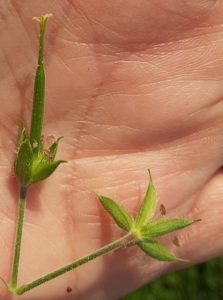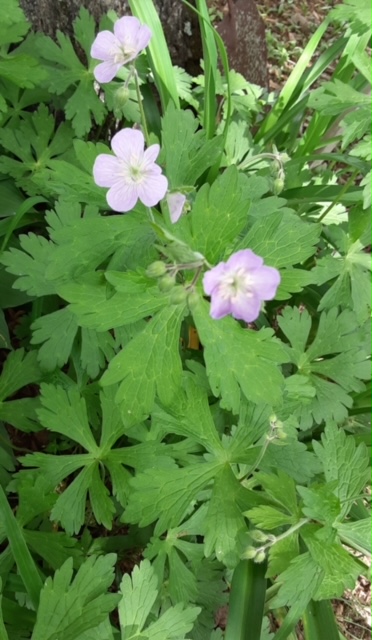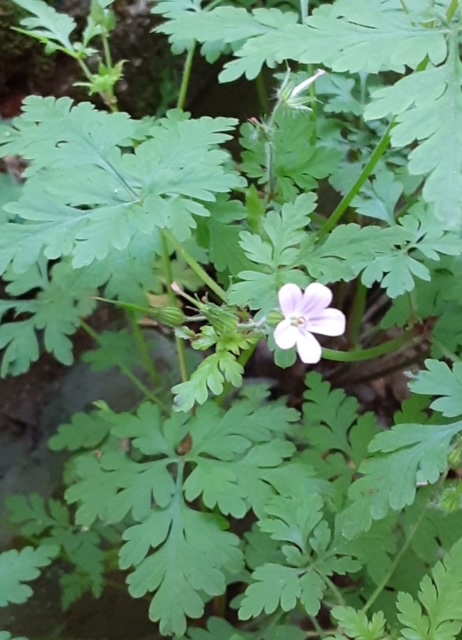By: Susan Sprout

It’s summer – geranium time! The Geraniaceae Family name comes from the word “geranos” which means “a crane” in Greek. The long-beaked seed capsules of these plants stick up in the air when dry and resemble a crane’s bill. Some members of the family actually have Cranesbill as a common name.
Two native geraniums I have discovered growing locally are Wood geraniums and Herb-robert. These are not the big brightly-colored hanging basket varieties from the garden store, but live tucked in shadier spots in the woods with flowers of pale pink and lavender.
Wood Geranium or Geranium maculatum, has basal leaves with five to seven lobes. The flowers are on a stem by themselves that comes straight up from the rhizome or root of the plant and have just a single pair of smaller leaves under their small cluster of five-petaled pink blossoms. Wood Geraniums are common in woods and field edges and can reach two feet in height. Their leaves were used by Native Americans as external astringent and to stop bleeding.

Herb-robert or Geranium robertianum is smaller and, well, seems more delicate to me with its deeply-dissected leaflets growing outward from hand-shaped leaves that turn red at the end of flowering. These plants have reddish hairy stems that branch and spread out in a lovely fashion. One of the common names for Herb-robert is “stinking bob” which should give you a clue to the strong pungent scent given off by the leaves and branches when they are touched. So much for delicate! The five-petaled pink to purple flowers grow on the branches, nestled among all of the leaves and really are small and delicate. Medicinally, Herb-robert was used for skin irritations and bruises. Could this plant have been around when the continents were pulled apart? It is listed as native to Europe, parts of Asia, North Africa and North America!


